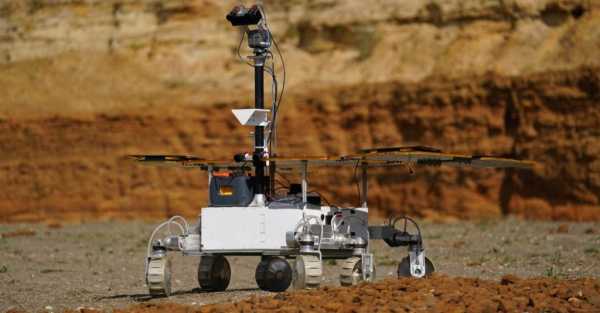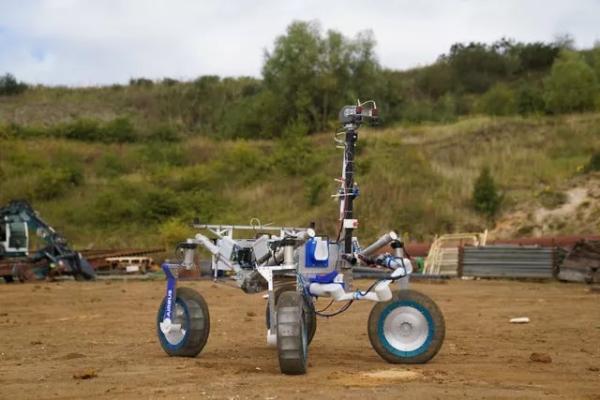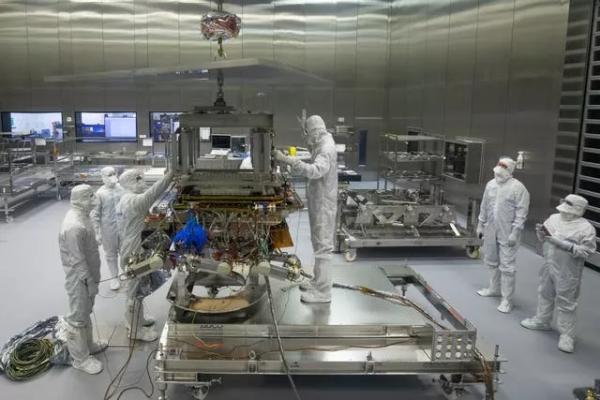
Two space rovers that could potentially help in the search for life on Mars have been put through their paces at a quarry in Bedfordshire.
The prototypes, named Codi and Charlie, are being tested by European aerospace giant Airbus in the hope that some of the technology could also be used to aid missions to the moon.
Codi, a four-wheeled rover, features navigation cameras and a robotic arm that it can use to collect rocks sealed in small tubes – without the need of a human operator.
Meanwhile, the six-wheeled Charlie, with its “rocker bogie” suspension, can nimbly climb over and navigate obstacles twice the diameter of the wheel without getting stuck or falling on its side.
The hope is, one day, these technologies could be used to search for life on the red planet and help in the human exploration of the moon.
Chris Draper, rover programme manager at Airbus, said: “The thing we are excited about the most at the moment is the moon.
“The moon is a stepping stone to Mars, so there is obviously a lot of interest in going back to the moon, and you can envisage rovers being part of the lunar ecosystem.
“Rovers can really support transporting things around at the base and support astronauts in their day-to-day activities.

“And then once we can prove we can do that on the moon, we (will) want to do the same on Mars.”
He also said he thought there is “a fair chance” that future missions may be able to find evidence of past existence of life on Mars.
Mr Draper said: “That’s why we have got to go there, and we have got to find out.”
Codi is based on another European Mars rover called the Sample Fetch Rover (SFR) that was built by Airbus in Stevenage.
SFR – which would have cost the European Space Agency (ESA) around £340 million (€400 million) had it been launched – was intended to collect sample tubes left on the surface of Mars by Perseverance, but the mission was scrapped in favour of helicopters.
But the ESA is continuing to fund further research using the rover to maintain and develop its space-faring and research capabilities.
Codi is able to drive to and retrieve samples with an accuracy of around 10cm while Charlie is testing a new navigation system developed for ESA’s flagship Mars mission, known as the ExoMars Rosalind Franklin rover, which is expected to launch in 2028.
Charlie is also trialling a sensor known as LiDAR, which can allow rovers to move in the dark without using cameras.
Geoffrey Drignon, technical lead for rover testing at Airbus, said LiDAR would be extremely useful for missions on the moon, where lighting conditions are very challenging.

But although it remains to be seen if these rovers will make it to the moon or Mars, ESA said the work is “very meaningful” for future missions.
Pantelis Poulakis, ESA’s Mars sample return project team leader, said: “When you are doing robotic missions that interact with the environment of another planet, being able to do field trials and testing is a very important part of the development.
“Nasa has a culture of testing, so even when they do not have a mission, they have an annual field-testing campaign with robotics, because this creates competence.
“So when there is a defined mission, people know exactly what to do and what the challenges are, and we are trying to do that in Europe.”
Sourse: breakingnews.ie






